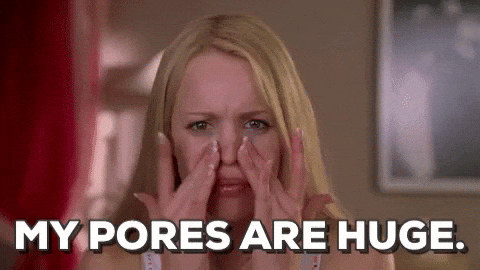- The Reframe Newsletter
- Posts
- 🧠⚡What's So Hot About Saunas?
🧠⚡What's So Hot About Saunas?
How to Get Hotter
What’s So Hot About Saunas?
Estimated reading ⌛️ time - 11 minutes
Hello Reframers!
If you’re new here, welcome! Every Monday morning, the Reframe Newsletter delivers actionable personal development, health, wisdom, and leadership tips directly to your inbox. We explore interesting podcasts, books, YouTube videos, business concepts, and more, aiming to inspire and guide you on your journey to a meaningful, fulfilled life.
… Warming up 🫠
You may have seen some of your favorite influencers tout the benefits of sauna bathing or show off their new at-home sauna and ice bath combo setup. You may have even tried the sauna at your gym (if it has one) or are sauna-curious and want to learn more about it. Regardless of how much you know about saunas or how often you sauna bathe, there’s a high probability you will learn something new today.
Please, please, please. This is NOT medical advice. Sauna bathe at your own risk, or seek medical advice from a doctor if you consider exploring a sauna bathing regimen.
So, should you explore a new sauna bathing regimen, or is their seemingly recent popularity just part of a larger marketing psyop to help us adjust to a higher standard of global temps???
This Isn’t Just a Recent Trend
Saunas have been around for a while—some sources indicate they have been around since 7,000 BC. They were initially popularized by Finland and gained traction in other Nordic cultures.
Today, saunas are widely recognized as places of cleanliness and relaxation or sites for social gatherings and even spiritual ceremonies. For today’s purposes, we are referring to saunas by their modern definition, a room or building designed as a place to experience dry or wet heat sessions.
In other words - saunas are places that make us sweat.
To Sweat is Human; To Sauna, Divine.
Benefits of Saunas
🫀 Hearth Health: Turn Up the Heat, Not Your Blood Pressure
Regular sauna use has been associated with a reduced risk of cardiovascular diseases (the leading cause of death in the US). Studies have found that sauna bathing can improve endothelial function and myocardial perfusion (how well blood flows through the heart), making it a beneficial activity for heart health. Heat exposure causes vasodilation, mimicking moderate cardiovascular exercise, and can decrease blood pressure over time.
CRAZY STAT: People who use the sauna 4-7x per week are 63% less likely to die from sudden cardiac death compared to those who only use the sauna 1x per week. - Dr. Rhonda Patrick

Gif by William_Redgrove_Illustration on Giphy
🔥 A Hot Sauna is the New Chill Pill ❄️💊
It turns out that the sauna is excellent for your mental health as well. The main mental benefits of sauna use stem from releasing BDNF (brain-derived neurotrophic factor), endorphins, and the body’s natural stress response.
Regular sauna sessions can also improve sleep quality - the drop in body temp after a sauna sesh can mimic the natural decrease in temp that occurs before sleep, helping you fall asleep and stay asleep.
Feel better, sharper, and enhance your mood with regular sauna usage.
Me after a fantastic sauna sesh…

Gif by ilovethatforyou on Giphy
🧴 Sweating the Small Stuff
Through inducing sweat, sauna use may help flush toxins from the body and cleanse the skin. The heat opens up pores and aids in natural skin cleansing, improving skin health (Mahlouji et al., 2020). It also helps flush the body after a long weekend of drinking tequila in Playa Del Carmen 🙂

Giphy
⌛Saunas as Healing Chambers
Sauna bathing has been shown to relieve pain and improve the flexibility of those with musculoskeletal disorders, including arthritis and chronic back pain. The heat helps relax muscles and alleviate pain, contributing to better physical function (Hussain & Cohen, 2018). According to Dr. Rhonda Patrick, PhD and researcher at the Salk Institute for Biological Studies, sauna sessions post-workout can help you increase growth hormone levels, improve endurance, and dramatically decrease DOMS (delayed-onset muscle soreness).
Sauna Protocol
Although guidance on frequency, duration, and temps varies, the general consensus on sauna bathing is that you should aim to sweat and feel hot, not unbearably hot.
I’m not an expert… but I LOVE a hot 190+ degrees in 15-minute intervals. If I don’t have much time, I shoot for a 12-15-minute session at 180+ degrees. If I have the time, I’ll go 2-3 rounds of 12-15 minutes with a 5-minute recovery and rehydrate between sets.
Here’s what the professionals have to say…
Dr. Andrew Huberman’s Recommendation:
Temps: 176-212 degrees Fahrenheit
Duration: 5-20 minutes per session
Frequency: 2-3x per week
Dr. Rhonda Patrick Recommendation:
Temps: 174 degrees Fahrenheit
Duration: 20+ minutes
Frequency: 4-7x per week
A Hint from Rae Sremmurd - I Ain’t Got No Type
Is there a best type of sauna?
I don’t have a type, and they all work slightly differently. I would encourage you to figure out which sauna works best for you!
Traditional Finnish Sauna: Characterized by dry heat with temperatures typically between 70°C to 100°C (158°F to 212°F), these saunas use a wood-fired or electric heater to heat stones, upon which water can be thrown to increase humidity momentarily. The Finnish sauna is known for its social and cultural significance in Finland, offering relaxation and health benefits through its high heat and löyly (steam).
Infrared Sauna: Unlike traditional saunas that heat the air, infrared saunas use infrared heaters to directly warm the body at lower temperatures, usually between 45°C to 60°C (113°F to 140°F). This type of sauna is favored for its deep tissue penetration, which proponents claim can offer enhanced detoxification and relaxation with a lower impact on cardiovascular stress.
Steam Room (Turkish Bath): Operating at a lower temperature than traditional saunas, typically around 40°C to 50°C (104°F to 122°F), steam rooms maintain a 100% humidity level, creating a wet heat environment. The moist heat is beneficial for respiratory issues, skin health, and detoxification, offering a distinct experience from the dry heat of a sauna.
Smoke Sauna (Savusauna): One of the oldest types of saunas, the smoke sauna lacks a chimney and is heated by a wood fire directly on the stones for several hours, filling the room with smoke. Once the fire dies down and the smoke clears, it leaves a gentle heat behind. The smoke sauna offers a unique, deeply relaxing experience with a distinctive aroma, considered by many to be the most authentic sauna experience.
Electric Sauna: These saunas are heated by an electric heater, making them more convenient and easier to maintain than wood-fired saunas. They can quickly reach the desired temperature, typically set between 70°C to 90°C (158°F to 194°F), offering a clean and efficient sauna experience suitable for home use or commercial settings.
Wood-Burning Sauna: Offering a traditional sauna experience with the added element of a wood-fired heater, this sauna type provides temperatures similar to electric saunas but with more natural heat and a distinctive wood-burning scent. The heating process is slower, adding to the ritual and anticipation of the sauna experience.
Regardless of which type of sauna you use or want to try, I would encourage you to try one. I have regularly used the sauna for years, and it has been an absolute game-changer for my overall health and fitness. Dare I say I rarely ever get respiratory sicknesses? I attribute my resilient respiratory health to consistent sauna usage.
I hope you learned a thing or two about deliberate heat exposure and have been encouraged to research more or even decide to implement it as part of your health and fitness regimen.
-In health, your Chief Sweaty Guy 🙂
If you feel like the Reframe Newsletter provides value to you every week, I would encourage you to share this with a family member, friend, or colleague.
It means a lot to us, and we track any referrals from our subscribers to reward you with free things in the future! (stay tuned)
The Content is for informational purposes only. You should not construe such information or other material as legal, tax, investment, financial, or other advice. Nothing in this newsletter constitutes a solicitation, recommendation, endorsement, or offer.
